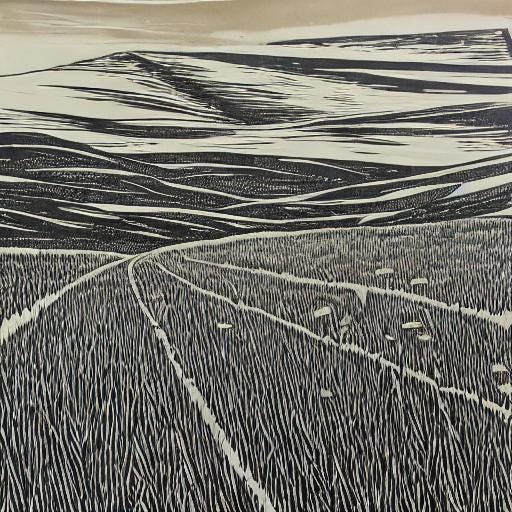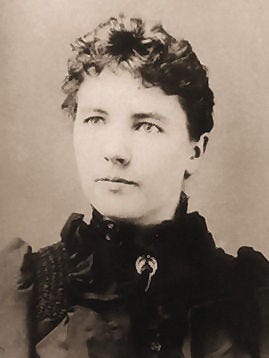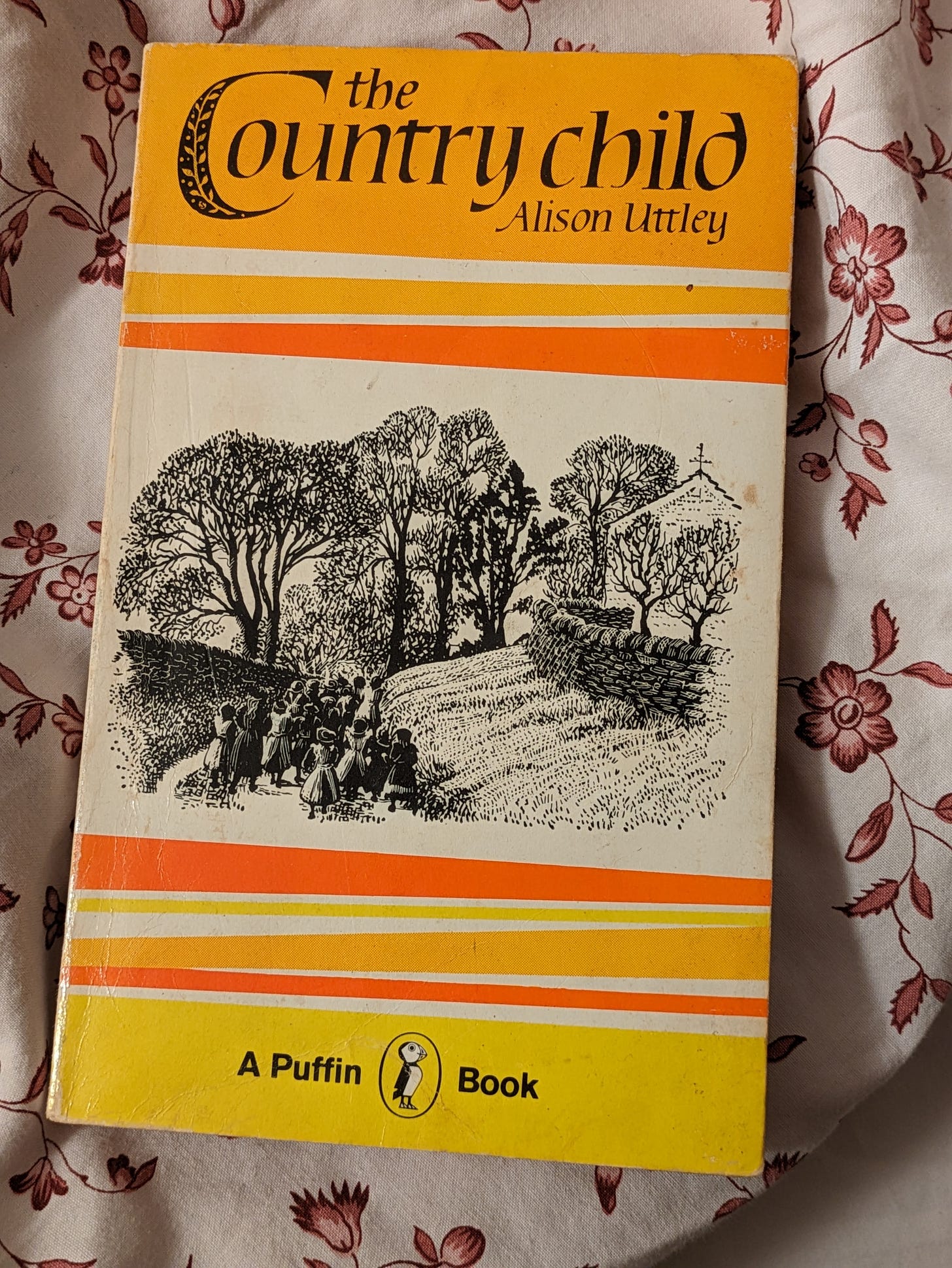This piece is about three women writers whose lives and careers were shaped in different ways by the momentous events of their times – in particular the Great Depression. One born in England, one in America and one in Germany, they all ended up in different places from where they were born, swept there by economic and political changes, as much as their own personal choices.
As this is a long piece I’m going to divide it into installments.
In 1962, the writer Alison Uttley wrote in her diary: “Reading By the Shores Of Silver Lake all day, by Laura Ingles [sic] Wilder. How good it is. A delight! It ought to sell a million copies.”
By the Shores of Silver Lake was the fifth of Laura Ingalls Wilder’s famous “Little House” books based on her pioneer childhood, first published in the 1930s. Her stories may have had particular appeal to Uttley because she, like Wilder, had used her own childhood as the basis for many of her children’s books. And like Wilder, she used her ventures into fiction not only to memorialize her childhood and family memories, but also to capture a way of life that was lost forever.
In Wilder’s case, this was the lost world of the American West, of pioneer wagons rolling across the prairie, the small towns that sprang up in their wake, and of the self-sufficiency of a family fending for itself in a log cabin in open grasslands or in the “Big Woods” of Wisconsin. For Uttley, it was the Derbyshire hilltop farm where she grew up with her family, a rural world of horse-drawn ploughs and candlelit farmhouse kitchens, part of a vanished England. The Little House books have become lasting classics, and still shape perceptions of that period of American history. Uttley’s book The Country Child was much admired during her lifetime, and was the first of many accounts of her own early life.
As a child I read both. I can still picture the row of hardback Little House books on the shelves of my local library, with their wonderfully evocative illustrations by Garth Williams. Alison Uttley’s books for younger children, about Little Grey Rabbit and her friends - small picture books about animals, in the spirit of Beatrix Potter - were regular gifts from a family friend. I owned a Puffin edition of The Country Child, in which the fictionalized version of Alison – Susan Garland – also lived in a house surrounded by big woods, pictured in their fairytale Gothic creepiness by illustrator C.T. Tunniscliffe.
My favourite of Wilder’s books was the first, Little House in The Big Woods, which has a lot in common with The Country Child. Both follow a year in the life of a young girl living with her family in an isolated and largely self-sufficient dwelling. Both are surrounded by woods – where Laura’s father hunts the prolific Wisconsin game, and Susan has to endure a lonely walk from school back to the farm each day. Both woods are a source of threat. Laura’s father spends hours one night afraid to pass a bear – which turns out to be an old tree trunk (the real bear is back at the log cabin, where Laura’s mother inadvertently slaps it, believing it to be a cow) while for Susan the dark woods are full of unnamed fears and fantasies. Both books follow the rituals of the season – haymaking, the care and eventual slaughter of livestock (both books have scenes where Susan and Laura hide away, putting their fingers in their ears, when the pigs are killed) the preparing and storing of food for the winter – and special occasions in the wider community – a dance or fair and, of course, Christmas. And both were published within a year of each other, in 1931 and 1932 – at the height of the Great Depression.
What prompted these women to write their stories? What created such a powerful urge to revisit their childhoods? And what was the reality that lay behind their fiction? Returning to the books as an adult, I found parallels not only in what they wrote, but in their experience as writers. I also discovered that both had received a more hostile treatment since their deaths, as aspects of their life and works were scrutinised and assessed against – sometimes unfairly – modern sensibilities.
Although the closeness of the Ingalls family and the strength of its bonds is one of the abiding impressions of the Little House books, Laura spent most of her life far from her birth family. As a teenager, she spent time away from home working as a teacher, and more permanently when she married at eighteen. Ten years later, after a difficult and unsettled start to married life, she and her husband Almanzo finally settled in Missouri - after which she rarely saw her parents again.
Alison Uttley also made an early break with home. In 1903 she became one of the first female students at Manchester University, where she studied physics. From there she went to Cambridge and teaching training college, to London – where she became friends with the future Prime Minister Ramsay MacDonald and his family, as well as teaching science – and then married the engineer James Uttley, from a prosperous Cheshire family. It was an astonishing trajectory for a girl from a small farm. Like Laura Ingalls, she began her married life with a completely new name: Alison had been Alice, but her husband had a sister of that name; Laura’s husband called her “Bess” because he also had a sister with the same name as his wife. Both ended up the mother of one child, and a very long way from where they had started out.
It was financial necessity that encouraged both to pick up the pen. Both the Wilders and Uttleys had to take refuge with the husbands’ parents during their early married lives: in the Wilders’ case, this was after a series of disasters which included their marital home burning down, and the lasting health problems of Almanzo. Alison’s husband’s problems were mental rather than physical. In her diaries, she recalls him giving up his job before the First World War and their “awful difficulties”: her diaries state her resentment of her in-laws and her dependence on them. This desire for independence became a major spur to her writing after the suicide of her husband in 1930, which left her with a son to support. For Laura, writing a regular column for the Missouri Ruralist was just one of many ways she helped pay the bills, a need that became all the greater if she and Almanzo were to hang on to their own small farm, Rocky Ridge, in the years of the Great Depression. In fact, the Depression was to have an important impact on both writers. Alison’s husband had assets, but in the early 1930s she found that the investments he had left her brought in very little. She had a son that she wanted to keep at boarding school then send to university. Laura had a grown daughter, Rose, who had been subsidizing her parents, but who was now short of cash. Both Uttley and Wilder became immensely productive during these lean years. And the Great Depression and the troubles that accompanied it – when so many felt the entire social order was under threat, and consequently yearned for a simpler time, before urbanization and modern industrial Capitalism – may also explain why their books found such a receptive audience.
Yet that doesn’t fully explain why they were drawn to write, so evocatively, about their own childhoods. They were also driven by a deep psychological need.
Part II to follow
Sources:
Little House In the Big Woods (1931) by Laura Ingalls Wilder
By the Shores of Silver Lake (1939) by Laura Ingalls Wilder
Prairie Fires: The American Dreams of Laura Ingalls Wilder (2017) by Caroline Fraser
The Country Child (1930) by Alison Uttley
The Diaries of Alison Uttley (2011) edited by Denis Judd
Alison Uttley, Spinner of Tales (2010) by Denis Judd







They are books worth reading at all ages, always something new to find.
Unca Chawes! (Not a real uncle, but he and my father used to jaunt round Angleey together, and he used to park his motorbike outside our house in Berkshire when visiting authors there).